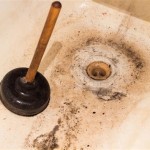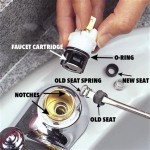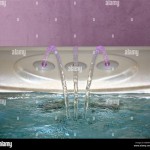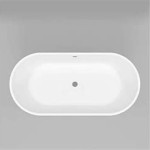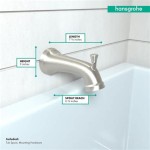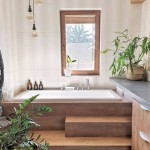Porcelain Enameled Steel Bathtub Vs. Acrylic: A Comparative Analysis
When embarking on a bathroom renovation or new construction project, the choice of bathtub material is a pivotal decision. Two prevalent options are porcelain enameled steel and acrylic. Each material offers a distinct set of advantages and disadvantages that influence durability, aesthetics, maintenance, and cost. A thorough understanding of these characteristics is essential for homeowners, contractors, and designers alike in order to make an informed decision that aligns with their specific needs and preferences.
This article presents a comprehensive comparison of porcelain enameled steel and acrylic bathtubs, examining their key features and performance attributes. By analyzing factors such as durability, heat retention, aesthetics, installation considerations, and environmental impact, the aim is to provide readers with the requisite knowledge to navigate the selection process effectively. The evaluation proceeds without bias, providing a balanced perspective on the strengths and weaknesses of each material.
Durability and Longevity
Durability is a paramount consideration when selecting a bathtub, as it directly impacts the lifespan of the fixture and its resistance to damage from daily use. Porcelain enameled steel and acrylic offer contrasting performance profiles in this regard. Porcelain enameled steel bathtubs feature a steel core coated with a layer of porcelain enamel. This combination yields a robust and rigid structure that is highly resistant to impacts and scratches. Properly maintained, a porcelain enameled steel bathtub can last for decades, withstanding the rigors of frequent usage.
However, porcelain enamel is susceptible to chipping if subjected to significant impacts. Once the porcelain layer is breached, the exposed steel underneath is vulnerable to rust and corrosion. While repairs are possible, color matching can be challenging, and the repair may not be as durable as the original finish. Furthermore, the weight of porcelain enameled steel bathtubs presents handling and installation challenges, potentially increasing labor costs and requiring structural reinforcement in certain applications.
Acrylic bathtubs, on the other hand, are manufactured from sheets of acrylic plastic that are thermoformed into the desired shape. The acrylic is typically reinforced with fiberglass to provide added structural integrity. Acrylic bathtubs are less likely to chip than porcelain enameled steel, and minor surface scratches can often be buffed out. However, acrylic is a softer material and is more prone to scratching and dulling over time. The overall lifespan of an acrylic bathtub may be shorter than that of a well-maintained porcelain enameled steel tub.
The reinforced structure of acrylic bathtubs makes them lighter and easier to install, reducing labor costs and minimizing the need for structural modifications. However, lower-quality acrylic bathtubs may exhibit flexing or creaking under heavy weight, which can be a long-term annoyance for the user. It is essential to choose acrylic bathtubs with sufficient reinforcement to ensure stability and prevent deformation over time.
Heat Retention and Comfort
Heat retention is a crucial aspect of bathing comfort. The ability of a bathtub to maintain water temperature directly affects the duration and enjoyment of a bathing session. Porcelain enameled steel and acrylic bathtubs exhibit significant differences in their heat retention properties.
Porcelain enameled steel is a good conductor of heat, meaning that it quickly draws heat away from the water. As a result, water in a porcelain enameled steel bathtub tends to cool down more rapidly compared to other materials. This can be mitigated by pre-warming the tub with hot water before filling it or opting for a thicker gauge of steel, although this increases the overall weight of the tub. Some manufacturers offer insulated porcelain enameled steel bathtubs, which can improve heat retention but also add to the cost.
Acrylic is a relatively poor conductor of heat, which makes it an excellent insulator. Acrylic bathtubs retain heat for a longer duration, allowing bathers to enjoy a warm soak for an extended period without the need to continuously add hot water. This can translate to energy savings over time, as less hot water is required to maintain a comfortable bathing temperature. The warmer surface of an acrylic bathtub also contributes to a more pleasant tactile experience for the bather.
The superior heat retention of acrylic bathtubs is a significant advantage for those who prioritize long, relaxing baths. While porcelain enameled steel bathtubs can be adapted to improve heat retention, the inherent thermal properties of acrylic make it a more naturally efficient choice for maintaining water temperature.
Aesthetics and Design Flexibility
The aesthetic appeal of a bathtub is a significant factor in bathroom design. The material and manufacturing process influence the available styles, colors, and overall visual impact. Porcelain enameled steel and acrylic offer distinct aesthetic possibilities, catering to different design preferences.
Porcelain enameled steel bathtubs typically have a classic, traditional appearance. The smooth, glossy surface of the porcelain enamel provides a clean and timeless aesthetic. While color options are generally more limited compared to acrylic, the available finishes are durable and resistant to fading. The inherent rigidity of steel allows for sharp, well-defined edges and a more substantial feel. Porcelain enameled steel bathtubs are often preferred in traditional or transitional bathroom designs where durability and longevity are prioritized.
Acrylic bathtubs offer greater design flexibility due to the thermoforming process used in their manufacture. This process allows for a wider range of shapes, sizes, and styles, including contoured designs, integrated armrests, and whirlpool jets. Acrylic bathtubs are available in a vast array of colors, from classic white to bold and vibrant hues. The ability to mold complex shapes and incorporate design elements makes acrylic bathtubs a popular choice for modern and contemporary bathrooms.
The wider range of design options available with acrylic bathtubs allows for greater customization and personalization. Homeowners can select a bathtub that perfectly complements their overall bathroom design scheme, creating a cohesive and visually appealing space. The ability to integrate features such as whirlpool jets and chromatherapy lighting further enhances the bathing experience.
Maintenance and Cleaning
Ease of maintenance and cleaning is an important consideration for any bathroom fixture. The surface properties of a bathtub material influence its susceptibility to staining, soap scum buildup, and the effort required for regular cleaning. Porcelain enameled steel and acrylic exhibit different maintenance characteristics.
Porcelain enamel is a non-porous surface that is resistant to staining and mildew growth. Regular cleaning with mild soap and water is typically sufficient to maintain its luster. However, harsh abrasive cleaners should be avoided as they can scratch the porcelain enamel finish. If the porcelain enamel is chipped or damaged, it can be more difficult to clean and maintain, as the exposed steel underneath is susceptible to rust.
Acrylic is also relatively easy to clean, although it is more prone to scratching than porcelain enamel. Mild soap and water are generally sufficient for routine cleaning. Abrasive cleaners should be avoided, as they can dull the acrylic surface over time. Special acrylic cleaners are available to help remove stubborn stains and restore the finish. Because acrylic is a solid material, minor scratches can often be buffed out, restoring the surface to its original condition.
Both porcelain enameled steel and acrylic bathtubs require regular cleaning to prevent the buildup of soap scum and hard water deposits. The frequency of cleaning will depend on water hardness and usage patterns. Proper ventilation in the bathroom can also help to minimize moisture buildup and prevent mildew growth, reducing the need for frequent cleaning.
Installation and Cost Considerations
Installation costs and overall budget are important factors in the bathtub selection process. The weight, dimensions, and ease of installation of a bathtub can significantly impact the overall cost of a bathroom renovation. Porcelain enameled steel and acrylic present different installation and cost profiles.
Porcelain enameled steel bathtubs are generally heavier and more cumbersome to install than acrylic bathtubs. Their weight requires additional manpower and may necessitate structural reinforcement in the bathroom floor. The more complex installation process can increase labor costs, making porcelain enameled steel bathtubs a more expensive option overall. The initial purchase cost of a porcelain enameled steel bathtub can vary depending on the gauge of steel, the thickness of the enamel coating, and the brand.
Acrylic bathtubs are lighter and easier to handle, simplifying the installation process. This can translate to lower labor costs and reduced disruption to the bathroom. Acrylic bathtubs are generally less expensive than porcelain enameled steel bathtubs, making them a more budget-friendly option. However, the quality of acrylic bathtubs can vary significantly, and it is essential to choose a model with sufficient reinforcement to ensure long-term durability.
When considering the overall cost of a bathtub, it is important to factor in not only the purchase price but also the installation costs, maintenance expenses, and potential repair costs over the lifespan of the fixture. A less expensive bathtub that requires frequent repairs or replacement may ultimately prove to be more costly than a higher-quality option that provides years of trouble-free service.

Which Is A Better Bathtub Acrylic Vs Porcelain Enameled Pressed Steel

Key Differences Between Acrylic And Steel Bathtubs Polaris Home Design

4 Common Bathtub Materials Pros Cons What To Buy For Your Bathroom

Steel Bath Tubs Explained Baths Vs Acrylic Qs Supplies

What Bathtub Material Is In My Bathroom Maryland Tub Tile
How To Choose The Best Bathtub Material A Comparison Guide Vevano

Porcelain Vs Acrylic Tubs A Quick Comparison

Porcelain Vs Acrylic Bathtub Comparison 2024 Most Common Differences Badeloft

Steel Bath Tubs Explained Baths Vs Acrylic Qs Supplies

Top Porcelain Steel Bathtub Vs Acrylic Enamel Manufacturer Free Standing China Bathtubs Made In Com
Related Posts

